An increase in oil royalty and KL Takes All: A Slue to Fallacy
by YB Dato Abdul Rahman Dahlan
Time
and again, we have listened to the opposition's over the top vitriol on
two very emotive issues to Sabahans; the promise of 15% increase in oil
royalty to Sabah and the allegation of federal government taking away
all Sabah resources and in return, giving almost nothing back to Sabah.
These issues must be answered factually and timely to prevent anyone
from being deceived into emotional shadow boxing by the opposition.
Let's start
with the 15% increase in oil royalty issue. While on the surface it
sounds quite appealing, there are serious concerns over the mechanics
needed to bring the notion to fruition. Making promises is one thing;
executing them is another thing all together.
Since the mechanics of bringing about the formation of PETRONAS and the very validity of the Petroleum Development Act vesting all the States' petroleum resources in PETRONAS may itself be questioned, it is high time to look seriously at this usurpation of state resources by the Federal government under the pretext of bringing about the economic development of the poorer States.
Where there is a will there is a way.
There is certainly no excuse for not redressing the balance in favour of the poorer States of Malaysia whose rich petroleum resources have been literally stolen by an avaricious Federal government.
AN OVERVIEW
The petroleum
business is not a business arrangement for the Average Joe. The capital
outlay, technical challenges and financial risks are so great and
prohibitive that only the companies which have specialized expertise and
bottomless bank accounts normally dare enough to go into it.
While certainly the petroleum business is not for the Average Joe, the risks are not as great as the companies and the government would like us to imagine. The reason that such companies have bottomless bank accounts is the fact that they are making enormous PROFITS from the petroleum business.
7 of the top 15 most profitable companies in the world for 2011 (including PETRONAS by the way) are oil companies. See the full list here. No. 1 was Gazprom, which made US44.5 billion in 2011 and No. 2 was Exxon Mobil, which made US41 billion.
The fact that PETRONAS has been able to contribute huge revenues to the Federal government, even amounting to 40% of the national budget, much of it extravagantly misspent, wasted and unaccounted for, also shows the fallacy of this statement.
WHAT risks?
Imagine
trying to lower drilling pipes, 4.5km from the sea level, in an
intensely-pressurized environment to search for the elusive black gold.
It requires special and extremely expensive equipment and expertise
which only the world’s oil major players (the likes of Shell, Murphy
Oil, ExxonMobil, etc) possess. The cost of exploration drilling could
run into hundreds of millions of dollars which would go to absolute
waste should no oil be found in vicinity of choice.
There is actually no need to let your imagination run wild and the black gold is not as elusive as the writer would have us believe. No oil company would spend hundreds of millions on exploration drilling without a high probability of finding oil and/or gas. There are preliminary geological, seismic and other surveys that are done first to maximise the probability of finding oil when the exploration drilling phase starts. Expenses are also usually capped to avoid waste.
The fact is that even if hundreds of millions are spent on exploration drilling in any particular area, which is not normally the case, any oil strike would be potentially worth billions and render these expenses immaterial.
The nation’s
oil company, Petronas, like her counterparts in other developing
countries (Indonesia, Venezuela and Nigeria etc), does not have the
capacity to absorb the financial risk mentioned above.
This is simply not true. PETRONAS's deposits in Malaysian banks alone keep the Malaysian financial system afloat. PETRONAS is ranked 12
It is not
financially equipped to spend billions on research and development and
take on the financial risks in the exploration and production phases
when the same billions are very much needed to be spent on the country’s
development.
This is another blatant lie that PETRONAS itself would probably refute. The fact is that the UMNO regime has even used PETRONAS illegally as a lender of last resort (which is supposed to be the Central Bank's role) in bailing out entities such as Bank Bumiputra and MAS and to bankroll the construction of Putrajaya, thereby putting it at even greater financial risk.
In addition,
unlike Petronas - which primarily operates within Malaysia’s waters -
the oil majors enjoy economies of scale. They operate all over the
world which helps to defray the costs of R&D, the exploration and
production phases.
Another lie. PETRONAS is a multinational and operates in many other countries around the world very profitably. This is what PETRONAS says on its website:
"PETRONAS has come a long way from managing the work of foreign production sharing contractors. We have evolved our own upstream capabilities and ventured into the entire spectrum of downstream activities to add value to our petroleum resources.
With our strategy of integration, adding value and globalisation, PETRONAS continues to deliver excellence towards realising our vision of becoming a leading oil and gas multinational of choice."
Also from its website:
- "Malaysia’s hydrocarbon reserves stand at 20.56 billion barrels of oil equivalent (boe) with an average production of 1.63 million boe per day.
- PETRONAS’ total hydrocarbon reserves stand at 27.12 billion boe with an average production of 1.1 million boe per day.
- International reserves in Africa, Southeast Asia, the Middle East and Central Asia stand at 6.56 billion boe, comprising nearly a quarter of PETRONAS’ total reserves.
- PETRONAS achieved a Reserves Replacement Ratio of 1.1 times in Malaysia and 4.1 times internationally, comparable with the industry average.
- Malaysia's first deepwater field, Kikeh, employing the first Truss Spar floating production unit outside the Gulf of Mexico came onstream in August 2007. The project achieved world-class performance with only five years elapsing between discovery and production."
Who is the writer trying to kid, and why is he downplaying PETRONAS's capabilities?
In the event
that oil is actually discovered, the capital that needs to be spent in
the subsequent phases is even more substantial. It is reportedly said
that the cost of the oil production phase could reach as much as RM2
billion. Sometimes even more.
Rubbish! This is a gross over-exaggeration. See the following source:
"The International Energy Agency (IEA) -- in its latest November 2008 world energy outlook -- gave the following estimates for the all-in costs of producing oil from various types of hydrocarbons in different parts of the world:
Rubbish! This is a gross over-exaggeration. See the following source:
"The International Energy Agency (IEA) -- in its latest November 2008 world energy outlook -- gave the following estimates for the all-in costs of producing oil from various types of hydrocarbons in different parts of the world:
Oilfields Estimated Production
/source Costs ($ 2008)
Mideast/N.Africa oilfields 6 - 28
Other conventional oilfields 6 - 39
CO2 enhanced oil recovery 30 - 80
Deep/ultra-deep-water oilfields 32 - 65
Enhanced oil recovery 32 - 82
Arctic oilfields 32 - 100
Heavy oil/bitumen 32 - 68
Oil shales 52 - 113
Gas to liquids 38 - 113
Coal to liquids 60 - 113
Source: International Energy Agency World Energy Outlook 2008"(emphasis added).
To cushion
such uncertainties and spread the financial risk, Petronas enters into a
joint-venture agreement (known in the industry as Production Sharing
Contract or PSC and later, a variant called RSCs or Risk Sharing
Contracts) with multinational oil companies like Shell, Murphy Oil or
ExxonMobil and others.
These giant
oil companies are given a percentage of the oil revenue generated in
return of them bearing the financial risk and sharing technologies worth
billions in Research & Development.
The FACT is that PETRONAS's own subsidiary, CARIGALI, does exploration and oil production for PETRONAS, not just in Malaysia but in other countries around the world such as Vietnam and Sudan. As its own website says:
"Globally, PETRONAS has exploration and production presence in over 22 countries in Southeast Asia, the Middle East, Central Asia, Latin America and Africa. These overseas ventures account for almost a quarter of our total oil and gas reserves."
The FACT is that PETRONAS's own subsidiary, CARIGALI, does exploration and oil production for PETRONAS, not just in Malaysia but in other countries around the world such as Vietnam and Sudan. As its own website says:
"Globally, PETRONAS has exploration and production presence in over 22 countries in Southeast Asia, the Middle East, Central Asia, Latin America and Africa. These overseas ventures account for almost a quarter of our total oil and gas reserves."
PETRONAS TAKES ALL?
The
opposition always paint the perception that Petronas has been unfairly
profiting from Sabah’s oil revenue, so according to them, it is only
right for Petronas to give 15% extra oil royalty to Sabah.
Can it be done? Is it even doable? Let’s explore the realities.
While the
following example will not be able to capture every essence of all the
JV partnerships Petronas entered into, none the less, it is suffice to
give a fair view of what the realities are on the ground.
The illustrations below explain how much Petronas makes from Sabah oil.
For
every RM100 revenue derived from Sabah oil, 5% goes to the state’s
coffer while another 5% to the Federal coffer. Approximately 45% goes
into recovery cost, and the remaining 45% goes to the joint venture’s
gross profit.
Again, this is highly misleading and only focusses on one part of PETRONAS's revenue, that is the selling of crude oil (for which it actually gets a premium on the international market). PETRONAS's actual revenues also include that from the refining of crude oil, gas processing and sale and the retail sale of petrol and other petrochemicals, for which there is a large value-added from the purchase of cheaper crude.
If Petronas is unable to pay
without jeopardizing its very existence, where would the additional 15%
come from then? Obviously there are two other choices left; the PSC
partner or the federal government.
It is very unlikely for the PSC
partner to give up what was already agreed in the contract between them
and Petronas. Furthermore, lower profit percentage would make oil
exploration in Malaysia unattractive to them.
Has any real analysis been done on the recovery cost of 45%? This appears to be very much on the high side. The oil companies would of course be more than happy to get away with it, if they were allowed to incorporate elements of profit into cost that is then more than fully recovered.
If the joint venture partners
refuse jobs in Malaysia, we will not be able to extract our oil in an
economically viable manner. This may lead to a serious energy security
problem for Malaysia: with no one extracting oil, we may end up
importing all of our energy requirement!
Mere scare-mongering. If PETRONAS can operate by itself profitably in other countries, it can also operate by itself profitably in Malaysia without the necessity for expensive high-cost joint venture partners who have already by themselves made tens if not hundreds of billions from Malaysia.
With Petronas and its joint venture
partners unable to commit the extra 15% (or about RM12.5 billion) to
the oil producing states of Sabah, Sarawak and Trengganu, the other
option is of course to take it from the federal government which
receives dividend around RM30 billion annually from Petronas.
As the oil-producing states only get their 5% based on the crude oil price, there should be no difficulty in giving them a fair share of the downstream processing and sale of refined products, which can easily come up to an extra 15% or more.
This 15% increase would actually mean RM3.2 billion for Sabah, Sarawak RM8.3 billion & Terengganu RM9.3 billion, or a total of RM20.8 billion which is approximately 30% of Petronas's profit for 2011.
This 15% increase would actually mean RM3.2 billion for Sabah, Sarawak RM8.3 billion & Terengganu RM9.3 billion, or a total of RM20.8 billion which is approximately 30% of Petronas's profit for 2011.
With reduced dividend from
Petronas, the federal government will have less money for its
development budget. This means there will be less public spending on
subsidies, schools, hospitals, police stations, roads and other
infrastructures. Obviously, the most impacted would be the non-oil
producing states.
There is obviously something wrong with the present system where the oil-producing states still remain among the poorest in the country.
Anwar Ibrahim must have the moral
courage to inform the non-oil producing states that as a Prime Minister,
he will cut their federal allocated budgets by RM12.5 billion.
Unfortunately this is not happening.
The last option available to Anwar
Ibrahim is to increase Sabah’s oil royalty by 15% but in order to ensure
he has enough funds available for the rest of the country, he will have
to cut Sabah’s federal allocation. Remember, cutting Sabah’s federal
allocation is within his prerogative as a Prime Minister. This option is
plausible given the fact he has never given any assurances publically
that he would not cut Sabah’s federal allocation which, at the moment,
is one of the highest among all the states in Malaysia.
It is actually funny how Anwar
hardly shares the specifics of his promise of 15% increase in oil
royalty with the rest of the country. Perhaps he knows very well that he
won't be able to provide explanation for them. Apparently, keeping
Malaysians in the dark makes the illusion easier to perform. In fact, I
remember asking opposition members, including Anwar Ibrahim himself, in
Parliament of the specifics but instead of an answer, I got a blank
response followed by sharp stares!
This is yet another irresponsible
claim by the opposition to gain sympathy votes in Sabah. It is a very
powerful lie which if not countered factually, could result in deep
division and hatred towards the Barisan Nasional federal government.
Let's address this issue
objectively and see if it is true that the federal government has been
taking so much of Sabah's resources (including oil money) but giving
back so little in return.
The following two illustrations show
what federal government collected in Sabah in 2011 and how much it had
spent in Sabah in the same year.
Contrary to lies spawned by the
opposition, the federal government actually spent more (by a whopping
RM4.736 billion) in Sabah in 2011 compared to what it collected in the
same year!
Isn't it amazing therefore that poverty is still so high in Sabah compared to other states that don't have the oil resources but live off oil revenues of the oil-producing states?
The statistics, which were made
available to me by Bahagian Analisa Cukai dan Bahagian Pengurusan
Belanjawan, Kementerian Kewangan Malaysia, went as far back as 2007 and
had breakdowns for each federal ministry.
It showed the same consistent trend of federal government spending more in Sabah than what it collected in each year. Nothing is more revealing than the truth and fact! Statistics, in the end, don't lie.
There are only lies, damn lies and then there are statistics.
For the year 2012 onwards, there is
no reason to believe the trend will reverse itself especially when Dato
Sri Najib Tun Razak has made it very clear that special emphasis will
be placed on Sabah's development under his economic transformation
program.
Towards this, Barisan Nasional Sabah is happy to note that to date, the Prime Minister has not disappointed Sabahans.
Tell that to all those poor Sabahans (and Sarawakians).










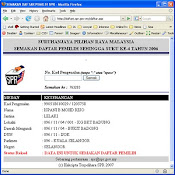









































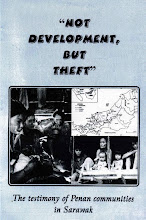
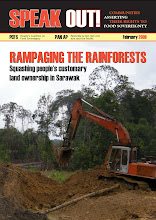





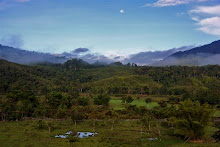



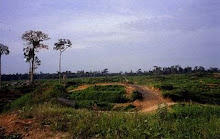

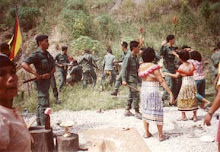





















1 comment:
How much do we get back from Bintulu off-shore gas?
You know how much they have siphoned away from us since its inception?
Post a Comment